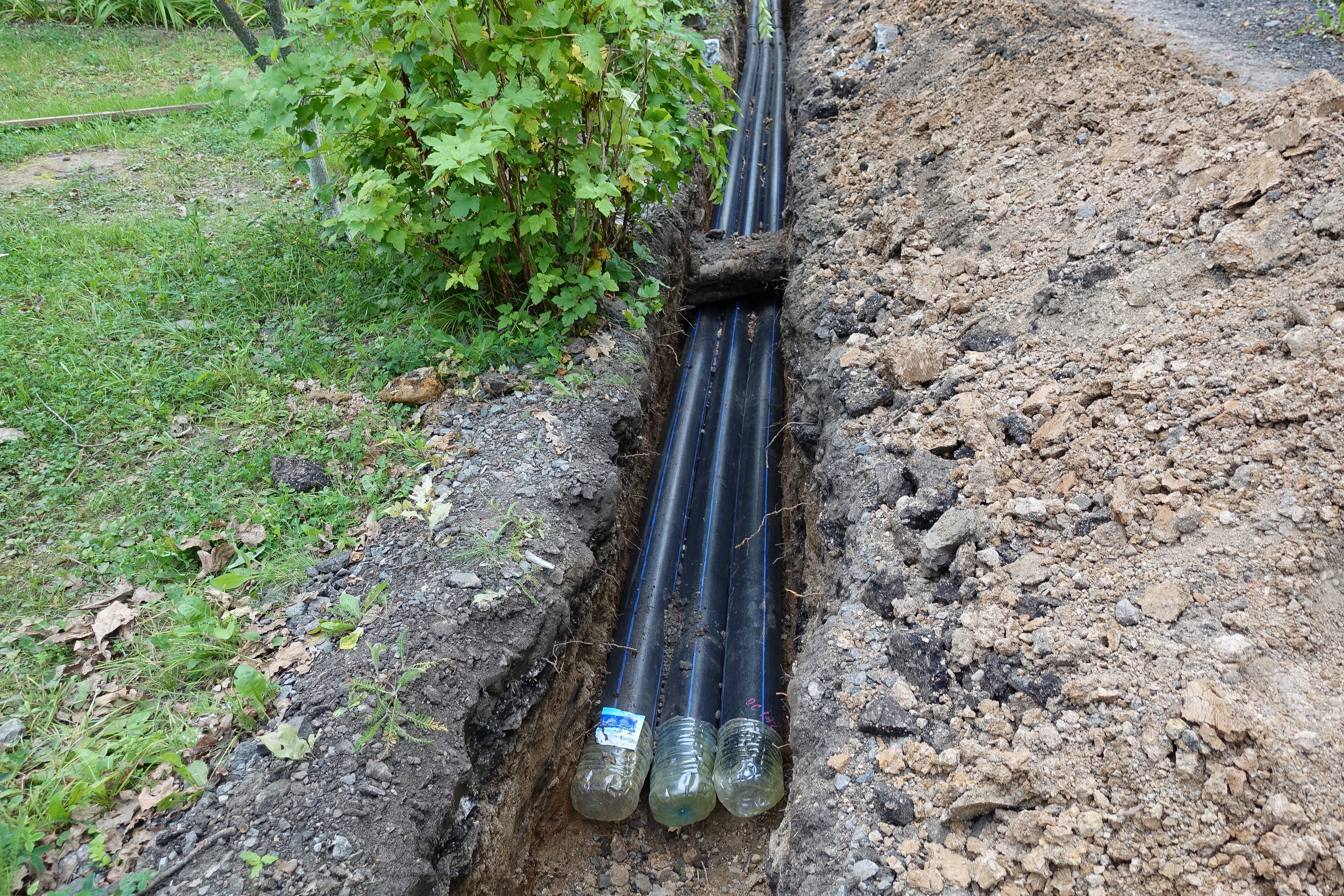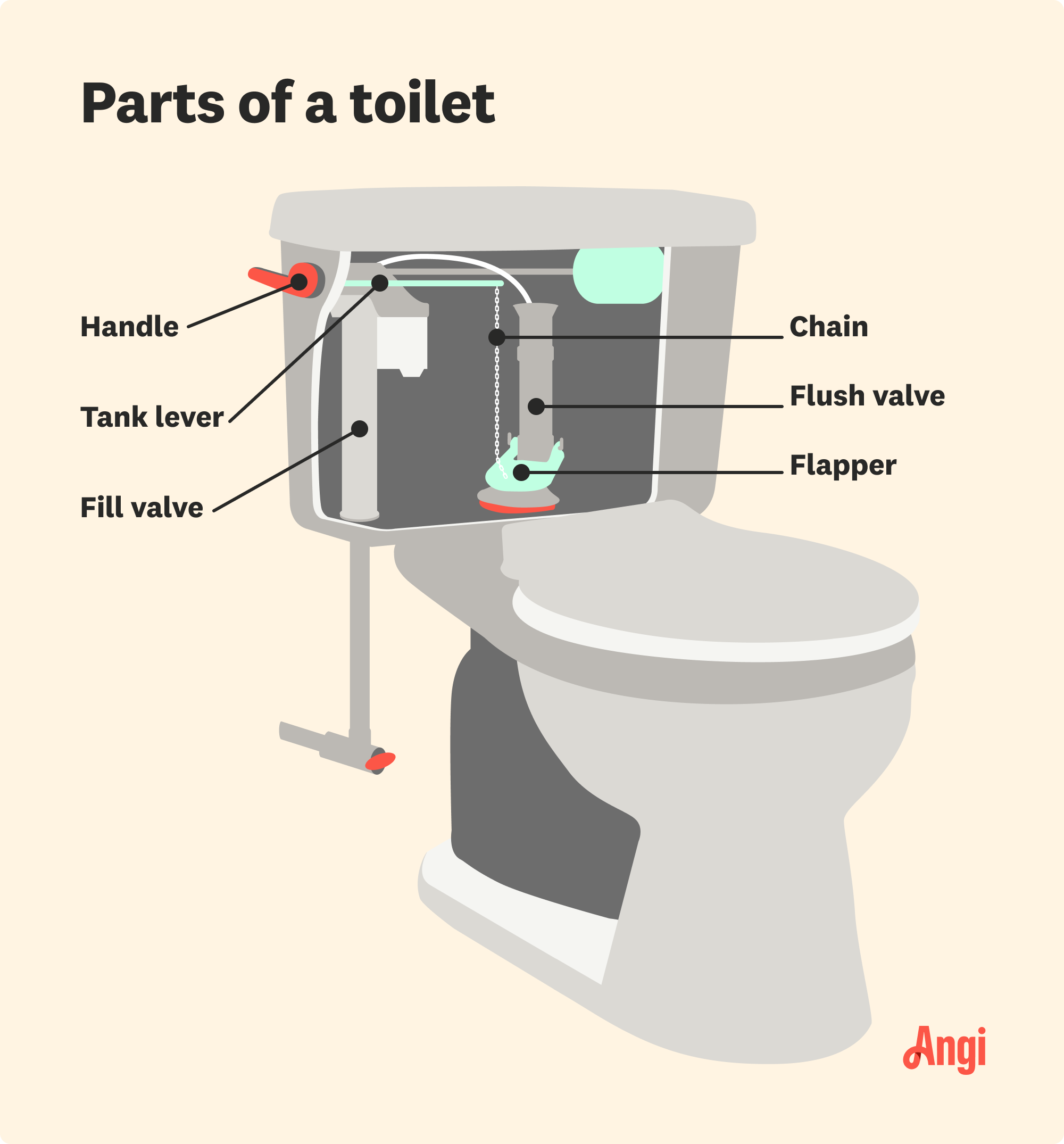
Discover the primary factors that will affect your main water line replacement cost in Atlanta, including length, material selection, and installation method.
Fix your toilet tank by fixing your fill valve


A failing fill valve causes leaks from the tank and into the bowl, hissing sounds, and low water levels.
The root of the problem often involves mineral buildup or worn-out parts.
Replace the fill valve if troubleshooting doesn't work or if it’s older than five years.
The average cost to replace a fill valve is between $50 and $150.
If your toilet is making a mysterious hissing sound, your fill valve might be to blame. Your toilet fill valve refills the tank after each flush, but if it fails, you can experience leaks and low water levels in the toilet bowl. Find out how to tackle each scenario to get your toilet back in commission.

The fill valve is the toilet part that refills your tank every time you flush. When you push your toilet handle or lever, the flapper opens, allowing the water from the tank to empty into the bowl. Once the water flows into the bowl, the flapper shuts, and the fill valve works to refill the tank.
Your fill valve has a life span of about five years, so if it’s been longer, it’s best to install a new one. Even if you’re not having issues right now, this will help you prevent some of the issues discussed below.
You’ve flushed your toilet, but no matter how long you wait, it keeps refilling instead of shutting off because water is leaking from the tank to the bowl. The culprit is likely the fill valve or the flapper.
When the fill valve is the problem, the unit is malfunctioning due to damaged or worn-out parts. You’ll know it’s the fill valve if you open your tank and see water continuously running into the overflow tube. To try fixing this problem, you can adjust the fill valve’s water level.
Or, if your fill valve is leaking from the top, inspect the top cap. You may need to replace a worn-out washer or install a new cap.
Installing a replacement is best if nothing works after you’ve tried troubleshooting the valve. You’ll want to fix a leaking toilet immediately since it’s using much more water (and nobody likes a high water bill). If you don’t have any plumbing experience, this could be a good time to call a toilet repair service near you so you can get the job done promptly.

A properly working toilet will refill the tank to 1/2 inch below the overflow tube in about 10 seconds. If it takes longer than it should, or if the toilet’s not filling with water to the proper level, then you may have a fill valve problem. You can try adjusting your fill valve’s water level to see if that fixes the issue.
Otherwise, check for sediment buildup in your fill valve, the water supply line, or the shut-off valve. You can flush all of these components to clear up the sediment buildup. If these solutions don’t work, install a new fill valve. You can either DIY the job for the cost of the part only, which is about $10 to $40. If you hire a pro, you can expect toilet repair costs for a fill valve to fall between $50 and $150.
Note that if water levels are too low in the bowl, it can cause a weak or incomplete flush, forcing you to double flush. Low water levels can also cause toilet clogs, adding another problem to the mix, so address this issue as soon as possible.
In the event of a plumbing emergency, it is critical to know the location of your water main shut-off valve in case you need to quickly stop water from flowing into your home. If you are unsure, a pro can help you locate the valve and show you how to operate it.
You might not notice any issues with your toilet right now, but if you open your tank and your fill valve is rusted or discolored, it’s time to install a new one. Corrosion on the outside means you’ll get corrosion on the interior parts, leading to a malfunction.
If you find the source of the corrosion, you can prevent the same issue from reoccurring. Poor water quality, high iron levels, hard water, lack of maintenance, and harsh cleaners can cause corrosion.
When your toilet makes hissing sounds, whether it’s every time you flush, constant, or random, it’s more than just a minor annoyance—it’s a big clue that something is wrong with the fill valve.
You can fix the hissing sounds by cleaning sediment buildup, readjusting water levels, or replacing the unit. Sometimes, a constantly hissing toilet is due to a worn-out flapper, so check before inspecting your fill valve.
If you have plumbing experience or are an experienced DIYer, then you may be able to replace the fill valve on your own. It’s an easy and inexpensive project that should take less than an hour to complete—you’ll just need a set of pliers along with the new fill valve.
But if you are uncomfortable working with plumbing or run into any issues, calling in a plumber may be your best bet. If the problem turns out to be more involved than swapping out the fill valve, a plumber can diagnose the issue and figure out how to get your toilet running smoothly again.
From average costs to expert advice, get all the answers you need to get your job done.

Discover the primary factors that will affect your main water line replacement cost in Atlanta, including length, material selection, and installation method.

Learn how much a plumber costs in Atlanta and how to hire a licensed pro for repairs, upgrades, or emergency plumbing service in your neighborhood.

Discover average main water line repair costs in Atlanta, GA, plus local factors that affect price, when to hire a pro, and how to maximize your budget.

You never know when learning how to unclog a toilet will come in handy. Get to know these eight methods for the next time things stop flowing.

Find out the average water pressure regulator replacement cost, key price factors, and tips to save on your project. Get transparent, expert-backed cost info.

Clogs can keep drains backed up and build up odors in kitchens and bathrooms. Learn how to use a plumbing snake, a simple solution to clearing clogs.